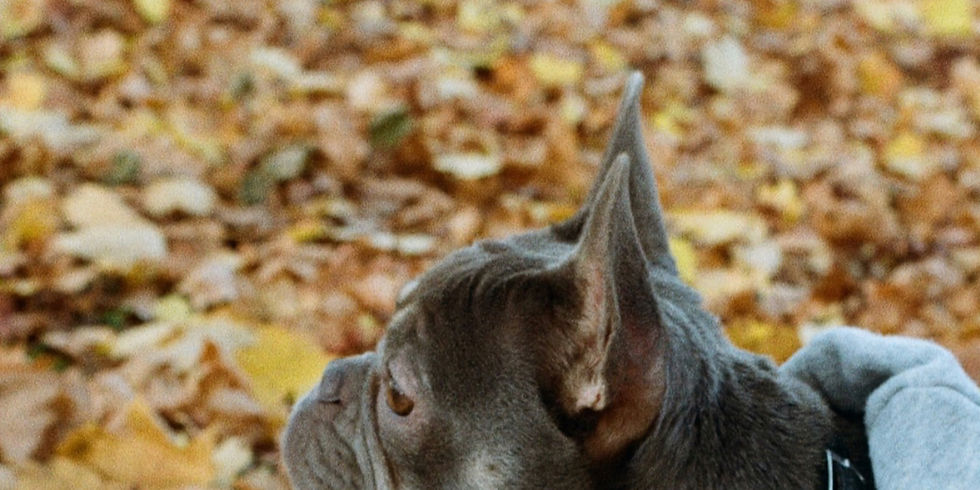Exploring Duration Differences in Our Dog Walks for Your Dog's Needs
- Advice

- Jul 18
- 3 min read
Let's find the right Dog Walk for you!

By tailoring your dog’s walking routine to their specific needs, you can help them stay happy and healthy with the right duration for them!
The Importance of Walk Duration
Every dog has unique exercise requirements influenced by their breed, size, and health. While active breeds may enjoy long, brisk walks, others might prefer shorter, leisurely strolls. Knowing the right duration for your dog's walks can significantly improve their physical and mental health.
Most dogs typically need between 30 minutes to two hours of exercise every day. Regular walks help maintain their fitness and mental stimulation, cutting down on behavioral issues caused by excess energy. For example, a well-exercised dog is known to be up to 50% less likely to develop anxiety-related behaviors.
Factors Influencing Walk Duration
1. Breed Type
Different dog breeds have different energy levels. High-energy breeds like Border Collies and Labrador Retrievers usually require around two hours of exercise each day. A Border Collie can endlessly run and play, while a smaller breed, like a French Bulldog, might only need about 30 minutes of moderate activity. Understanding your dog's breed can set you on the right path for determining the ideal walk duration.
2. Age Considerations
Puppies are filled with energy but need specific care. For these lively younger dogs, a good rule is walking them for about five minutes for each month of their age. For instance, a three-month-old puppy should get 15 minutes of walking plus playtime. In contrast, senior dogs may face mobility challenges. Short, frequent walks of 10-20 minutes can help them stay active without overdoing it.
3. Health Conditions
Health problems can affect how long your dog can walk. Dogs with arthritis or heart issues may benefit from shorter, low-intensity walks, and it is essential to consult your veterinarian regarding the best routine for their specific conditions. For example, dogs with arthritis might be limited to 15-20 minute strolls daily. Paying attention to how they respond during walks can provide clues about adjusting their exercise duration appropriately.
4. Weather Conditions
Weather greatly impacts walking duration. In hot weather, shorter walks are recommended, especially for brachycephalic breeds like Pugs, which can struggle with heat. Aim for walks during cooler parts of the day, such as the early morning or late evening. In colder weather, appropriate gear like dog sweaters can allow comfortable longer walks to 30-60 minutes, but be cautious of signs that they are too cold.
Walk Duration Recommendations by Activity Level
1. Sedentary Dogs
For dogs that are usually less active, like older pets or those kept mostly indoors, short, casual walks of around 15-30 minutes are ideal. Gradually increasing the duration can improve their fitness over time.
Our recommendation: Drop in Visit or 30 minute walk
2. Moderately Active Dogs
Moderately active dogs typically require 30-60 minutes of exercise per day. You can split this into two or three walks. Keeping their mind engaged with interactive toys during these walks not only helps encourage exercise but also helps prevent boredom. Our recommendation: 45 minute Walk, 1 hour walk or 1 hour Day Visit
3. Highly Active Dogs
Energetic dogs demand more intense routines. Daily walking sessions of 60-90 minutes are necessary. Consider incorporating activities like jogging or hiking to prevent boredom and ensure they stay engaged. For example, a German Shepherd may excel with daily runs alongside their owner, further enhancing their quality of life.
Our recommendation: 1 hour walk, 1.5 hour walk or 2+ hour Day Visit
Flexible Schedule for Varying Activity Levels
Creating a flexible walking schedule is essential. Some days may allow for longer outings, while others may need shorter ones. We will pay attention to your dog’s cues during the walk. Are they eagerly tugging at the leash, or do they seem tired and lag behind? These signs can guide us in adjusting the duration for that day's activities.
Pspsps.. if you are new here, you'll need to book a meet & greet in before ew can go ahead with any booking.



